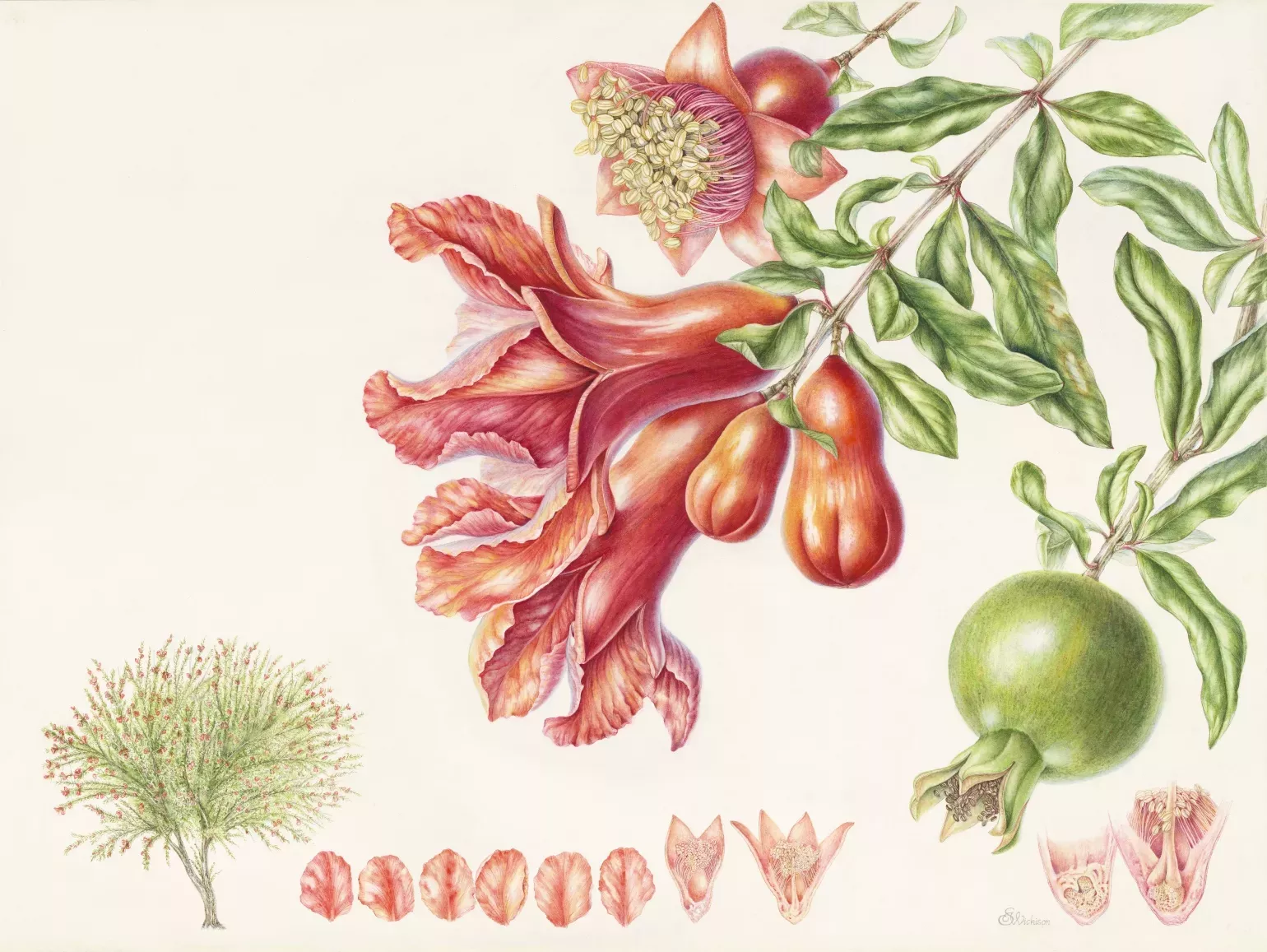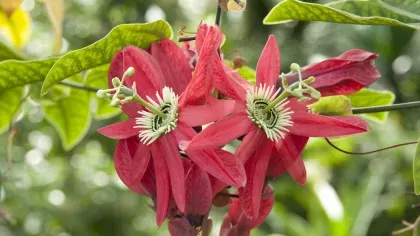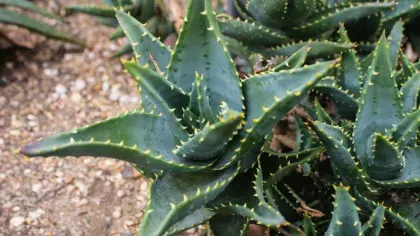18 December 2019
5 things you didn't know about pomegranates
Learn more about the mysterious pomegranate; an important source of food and medicine for thousands of years and the fruit of ancient myths.

The pomegranate (Punica granatum) is one of the oldest fruits known to humans; it's deeply embedded in our history.
For thousands of years, it has been a vital provider of food and medicine across different cultures and civilizations.
Mistaken origins
The genus name given to pomegranates (Punica) came from the Roman name for Carthage, an ancient city in Northern Africa
The Romans mistakenly assumed pomegranates derived from Africa.
In fact, pomegranates are considered to have originated from Iran, south-west Pakistan and parts of Afghanistan.
The pomegranate fruit was also given a classical Latin name, Malum granatum, meaning "grainy apple".
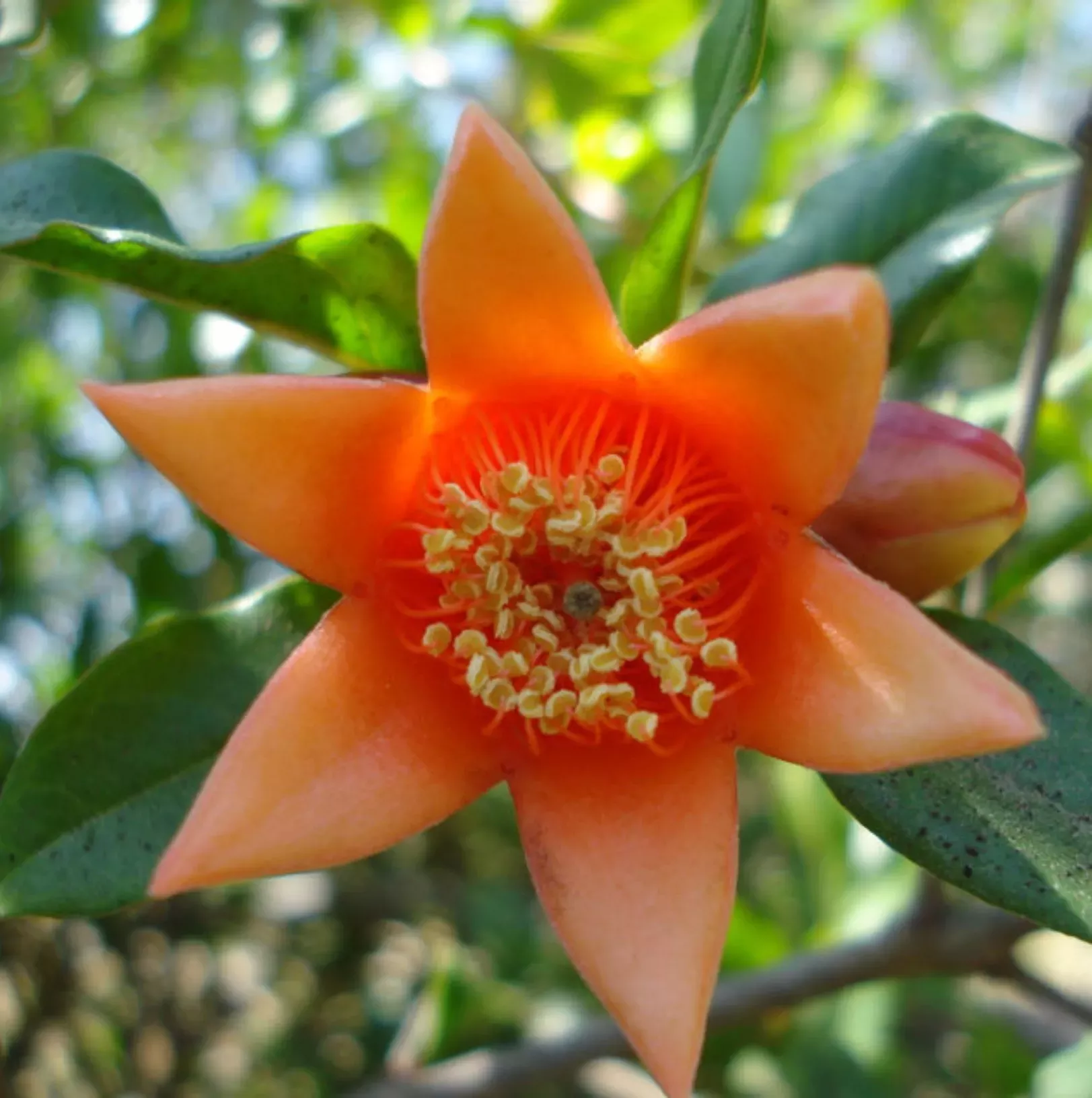
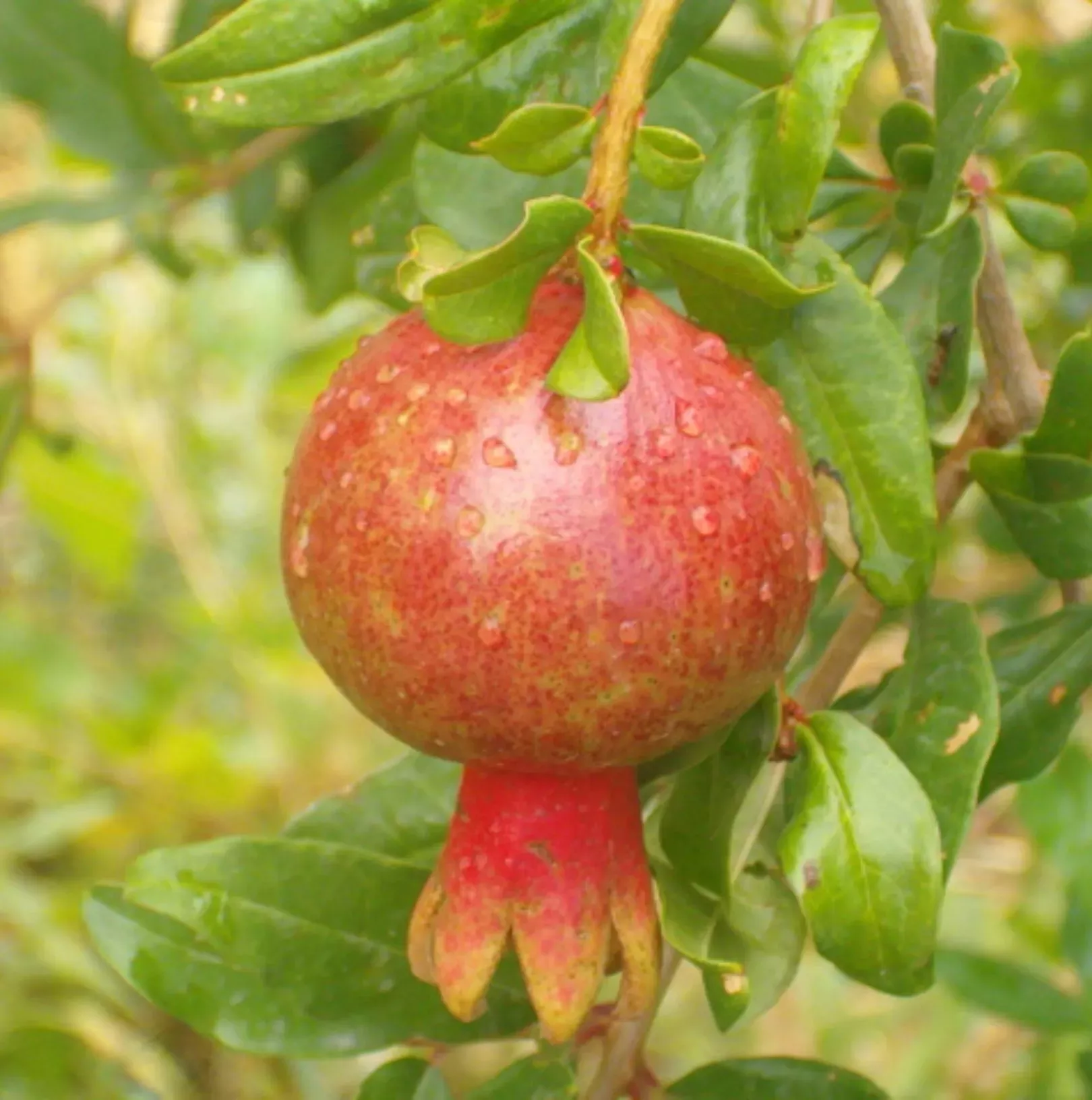
Botanically a berry
True berries are fleshy fruits that come from a single flower with one ovary and typically have several seeds.
Pomegranate fruit fall into this group.
The dry outer covering (husk) of pomegranate fruit is made up of two layers:
- An outer, hard layer called a epicarp
- An inner, soft layer called a mesocarp
The inner mesocarp forms distinct, non-symmetrical chambers containing seeds with a fleshy covering (aril).
Did you know? Bananas, cucumbers and aubergines are also classified as berries, but strawberries and raspberries are not.
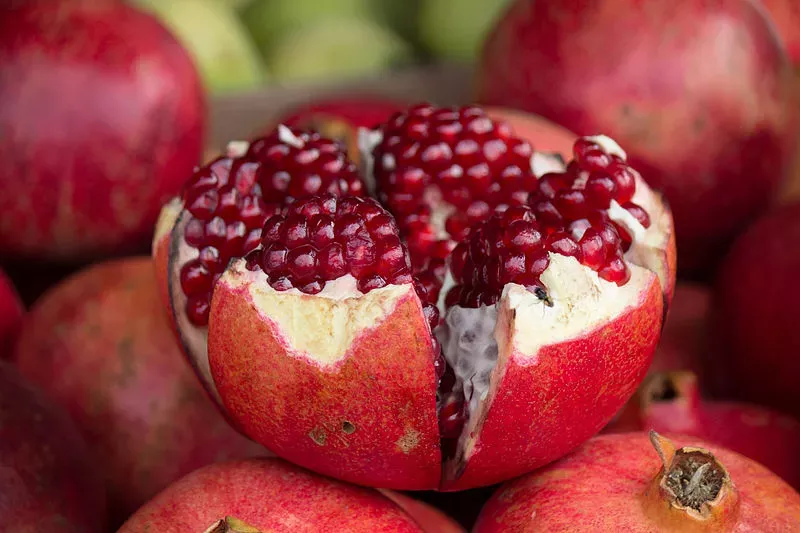
Disease fighter
The fruit, flowers, bark, roots and leaves of pomegranates contain chemicals, such as polyphenols, that can be used to treat a number of diseases and conditions.
It is rich in vitamin C and folic acid.
Ancient cultures understood the health benefits of pomegranates and used it in remedies for digestive disorders, skin disorders, and intestinal parasites, to name a few.
Modern day research has revealed that pomegranates might contribute towards preventing serious conditions such as heart disease, diabetes, and cancer.
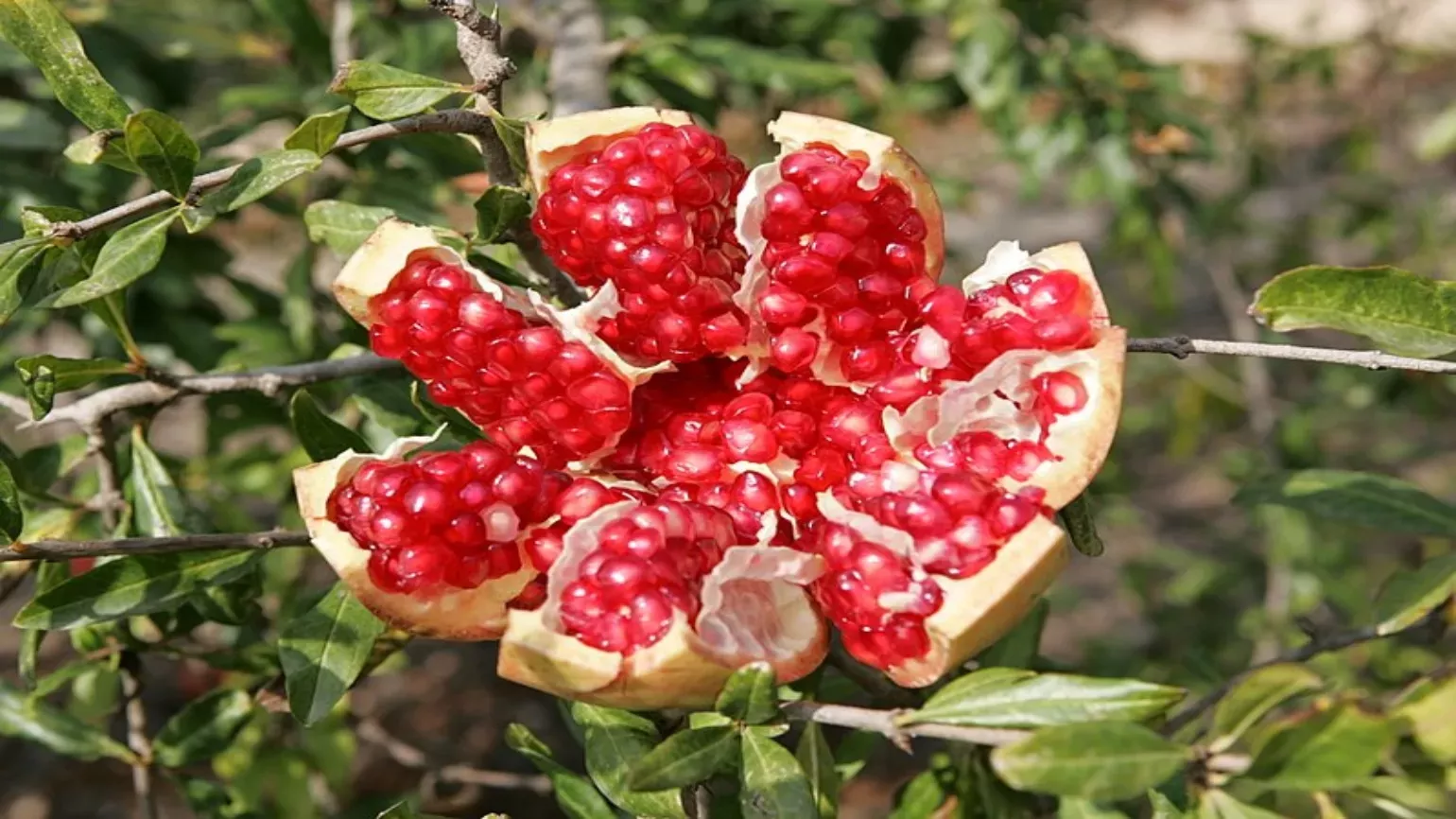
Symbol of death and fertility
In Greek mythology, the pomegranate was known as the ‘fruit of the dead’ as it was said to have arisen from the blood of Adonis.
It also prominently featured in the myth of Hades and Persephone.
Hades, God of the underworld, used pomegranate seeds to trick Persephone into returning to the underworld for a few months of every year.
Alongside death, the pomegranate symbolised fertility in Ancient Greece and Rome.
It had a strong association to Aphrodite, the Greek goddess of love, as well as Hera, the Greek goddess of marriage and childbirth.
In Ancient Rome, newlywed women wore crowns woven from pomegranate leaves, and the juice of pomegranates was used to cure infertility.
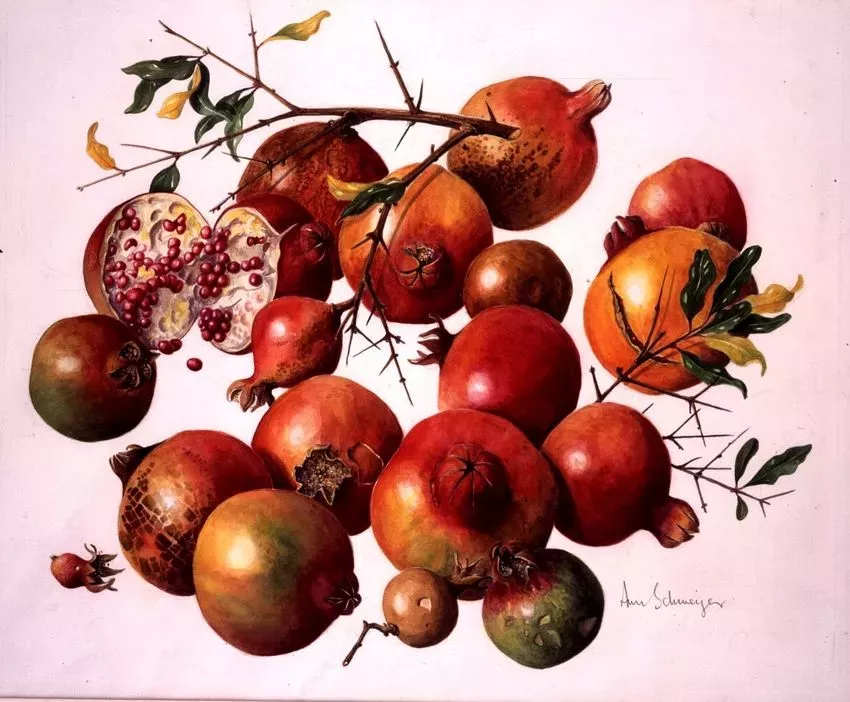
Grown in paradise
In the Quran, pomegranates grow in the Garden of Paradise and are referred to on multiple occasions as God’s good creations.
The pomegranate is also said to be found in the Garden of Eden according to Ancient Iranian Christianity and was believed to be the real forbidden fruit rather than the apple.
During the non-Christian Iranian tradition, Yalda Night, people come together on winter solstice and eat pomegranate fruit to celebrate the victory of light over darkness.
Look out for the pomegranate, a plant heavily laced in symbolic history and celebrated to this day for its many nutritious and medicinal properties, in Kew's Temperate House. Its gorgeous fruits will be on display right through summer and into spring.
You can also keep an eye out for other pomegranate varieties in the Duke's Garden at Kew.
If you want to discover more about pomegranates through beautiful botanical illustrations, pick up a copy of Plants of the Qur’ān: History & Culture.
